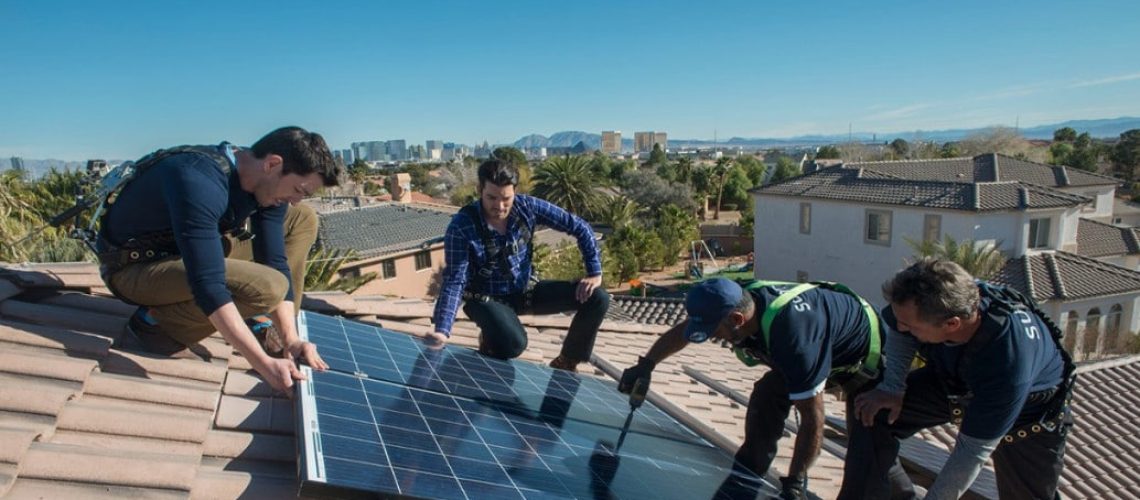The fundamental difference between the two regimes is that net energy metering subtracts energy produced from energy consumption and prices the resulting “net energy” at the retail rate while net energy billing charges imports of energy from the grid under the retail rate and compensates exports from the consumer to the grid at a much lower rate, which is sometimes interpreted to be the wholesale market rate.
What’s the difference in payback periods between the two regimes: the one that’s currently in place that relies on net energy metering, NEM 2.0, and the one that’s going to kick in sometime in the spring of 2023, based on the CPUC’s unanimous decision on December 15 to rescind net energy metering and replace it with net energy billing?
The answer depends on who you ask. The issue has become so politicized that I don’t know who to trust. To answer the question, I decided to carry out a thought experiment using stylized data from my solar-plus-storage system that is the kind that commission wants to promote.
I installed solar-plus-storage in December 2019 and was given permission to operate the system a month later. Earlier, in June 2019, I had bought a Tesla Model 3.
I installed an 8 kWdc system and paired it with a battery capable of storing 9.8 kWh of energy. The system was designed to net out my energy usage for the year, which in the prior twelve months was 10,000 kWh. After discussions with my local utility about my best rate, I decided to switch to the EV2-A rate.

The payback for the system was estimated at nine years, using (a) an estimate of $200 a month for the 12 months preceding my purchase of the EV and the installation of the pre-solar-plus-storage bill and (b) the estimated savings from the system after its installation. The big unknown was the magnitude of the bill savings, which depends on a number of factors, including the weather, the amount of shade from any big trees, the orientation of the roof, the efficiency of the panels, and so on. This analysis did not include a projected change in future rates, so it was a bit conservative given PG&E’s rates history.
During this calendar year, from January to November, my True-Up bill under NEM 2.0 and PG&E’s EV2-A rate came in at $42 a month. That’s based on the numbers in the table below (adding $309.90 in the 5th column to $149.02 in the 8th yields $458.92, then dividing by 11 yields $41.72).

I am guessing by the time the data from December is added, the monthly average bill will come in at $50 a month.
Now let’s engage in a thought experiment. Imagine if I had not made my investment back in 2019, but was planning to make it sometime in the coming year with the new net energy billing rules in place. I would be switched over to the E-ELEC rate and pay an additional fixed charge of $15 a month. See the comparison of rates below.

My energy rates during the peak and part-peak periods would be a tad lower on the E-ELEC schedule but the off-peak rate, which has the largest number of hours, would be higher. Let’s assume the effect of switching rates would cancel out, so there would be no incremental impact on my bill.
Under net energy billing, export compensation will drop down by 80% in five years and then hold steady. My pre-solar bill was $200 a month. Under NEM 2.0, the post-solar-plus-storage bill is $50 a month, representing a savings of $150 a month. Using a rule of thumb, I am estimating that 60% of the monthly bill savings (or $90) from my solar-plus-storage system comes from reducing usage and 40% from export (or $60). Some 80% of the export savings ($48) will disappear, leaving me with just $12 of savings from exports.
I would only be saving $102 a month as opposed to $150 a month, a drop of roughly a third. Clearly, that would extend the payback period from 9 years. I just don’t see how the payback period would be shortened, as asserted in the December 15 decision.
The ostensible purpose of the decision seems to be to promote self-consumption. Consumers will have to avail themselves of the following choices under the new rules:
- Install the same size system they would have installed under NEM 2.0 but pair them with two batteries. In my example, install an 8 kW system which will produce 10,000 kWh to net out my annual usage but install another 9.8 kWh battery to absorb the excess generation in the afternoon.
- Undersize their PV systems to prevent exports from taking place and end up with an annual deficit. In my case, that would mean I would just install a 4 kWh system and have an annual deficit of 5,000 kWh. I would pay PG&E directly for the difference at rates that are projected to rise at least another 30% by 2026.
- Cut their consumption in half. That’s never easy to do, regardless of how much one invests in energy efficiency. I made a major investment in energy efficiency in February 2016, via the Energy Upgrade Program. I also gave away an 8-person spa. My bills only went down by 20%. None of these three options will appeal to customers.
- “Cut the cord” and construct their own microgrid using a bi-directional EV charger and to install a small backup generator that might run for a total of 50 hours a year. Of course, this route carries its own risks and for the foreseeable future, will only interest the ultra-wealthy.
The decision to end net energy metering will have several consequences. Rooftop solar installations will plummet because most people don’t want to pair them with batteries. Battery installations are rare because they are expensive. I personally know two dozen people who have installed solar panels. Of this number, only three have installed batteries.
Only wealthy customers who really don’t care about payback periods, earning a million dollars a year and higher, would make that investment. I certainly would not be making that investment if I had not already made it. Neither will the low-income customers whose well-being is the stated intent of the decision.
The only thing I can think of that will validate that assertion is that rooftop solar installations, either with or without batteries, will plummet and thus the so-called cost shift from the poor to the rich will diminish. Maybe that’s the real intent of the unanimous decision. But what will also diminish is California’s pursuit of net zero carbon emissions.
Telling consumers that large-scale solar costs only 4 cents/kWh rings hollow when they are paying 30 cents/kWh. In the coming decade, electricity rates will continue to rise in the billions of dollars, as stated by the utilities. They won’t be able to blame NEM for the rate increases. However, the one option consumers have today for lowering bills while staying connected will be taken away by this unanimous decision.
This will also represent a setback for the state’s electrification goals. What’s the primary reason that heat pump installations are rare in California? The high cost of electricity mentioned above. Heat pumps become cost-effective when customers have installed rooftop solar panels. The same can be said for EVs.
Consumers will be asking why they can’t get power for 4 cents/kWh if the utilities keep insisting that bulk renewables are the cost-effective solution. The utilities undermine their own viability when they insist on ignoring the customers’ viewpoint on the economics of power purchasing.






